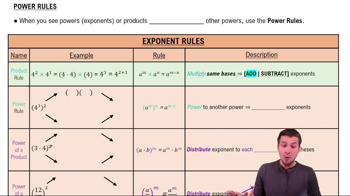{Use of Tech} Population growth Consider the following population functions.
d. Evaluate and interpret lim t→∞ p(t).
p(t) = 600 (t²+3/t²+9)
 Verified step by step guidance
Verified step by step guidance Verified video answer for a similar problem:
Verified video answer for a similar problem:



 5:21m
5:21mMaster Finding Limits by Direct Substitution with a bite sized video explanation from Patrick
Start learning